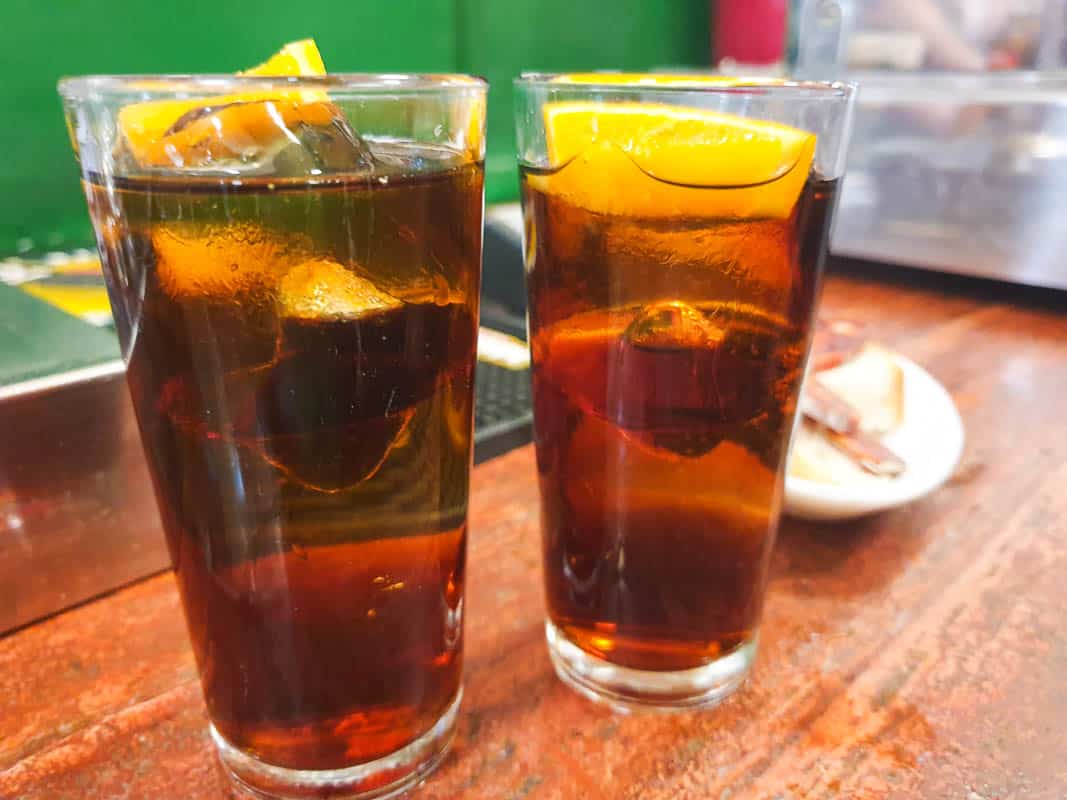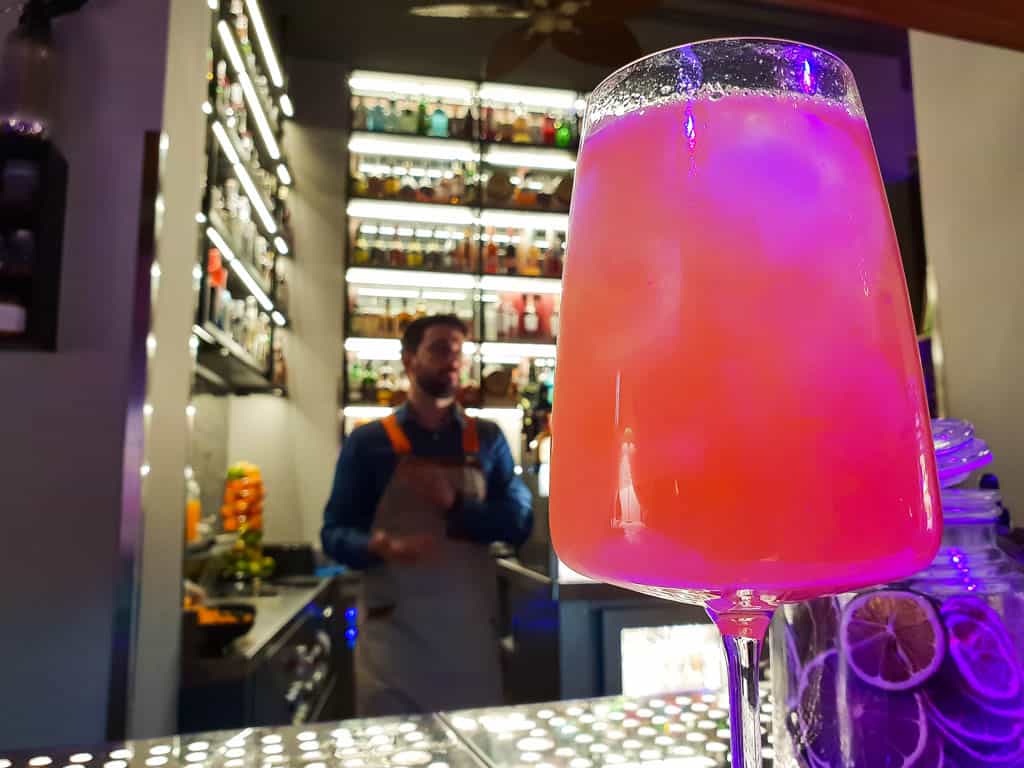It should come as no surprise that Spain is world-renowned for its cuisine. While Spanish food is considered amongst the in the world, Spanish drinks don’t receive the same accolades. Yes, Spanish wines are highly regarded but what about the rest? In this post, we share our experiences from living in Spain to highlight some of the best drinks in Spain.
*This post contains compensated links. Find more info in my DISCLAIMER. As an Amazon Associate, I earn from qualifying purchases.
Spanish Drinks Guide
Drinks from Spain come in a number of different guises. Some are an everyday tipples that you’ll find in the bars of even the smallest villages.
Others are reserved for special occasions. A handful share echoes of drinks that can be found elsewhere in the world, while many are almost entirely unique to Spain or even specific regions of the country.
Generally speaking, Spaniards enjoy alcoholic drinks on a regular basis, although it’s rare for anyone beyond their student days to drink to excess.
Most consumption of Spanish alcoholic drinks takes place outside of the home when meeting up with a friend or colleague. This helps explain why Spanish bars are busy right throughout the day.
In Spain, children often start to sample alcohol from an early age, typically between the ages of 12 and 14. Most parents allow their children to try small quantities in a family setting alongside a meal.
While locally grown red and white wines are popular, it’s the country’s lagers that take top billing for most. And let’s face it, there’s probably no better way of cooling down in the heat of a Spanish summer! That said, there are plenty of other options to choose from, as we’ll see.
Our Favorite Drinks of Spain

One of the best things about living in Spain for three years was the sheer volume of different drinks to sample. From San Sebastian in the North to Sevilla in the South, the wide variety of drink options seemed endless. This Spanish Drinks Guide only scratches the surface of what to drink in Spain. With that said, let’s take a look at our recommendations on the very best drinks of Spain!
Vermouth

While all the rage in fashionable circles, vermouth is actually one of the most traditional Spanish drinks still regularly consumed.
A fortified wine (although nowhere near the alcohol content of something like sherry), bars will often have their own house vermouth which is often made on the premises.
There are two main versions of vermouth to look out for vermut rojo (red vermouth) and vermut blanco (white vermouth). Sweeter vermut rojo is more popular than vermut blanco. More times than not, vermut rojo is the default type you’ll be served in a bar.
Vermouth is generally served on ice in a small, narrow glass. A garnish of olives or lemon peel is usually present. While Amber and I could drink vermouth all day, it’s mainly enjoyed at midday, as well as an aperitif before a meal.
Vermouth is very popular across Spain but in particular in places like Catalonia and Andalucia. We’ve found the best vermouth when traveling to Malaga and Sevilla. Antigua Casa de Guardia in Malaga is our favorite vermouth bar. It’s very old school and very much worth a visit.
Cava
Spain’s answer to champagne, but generally sweeter on the tongue like an Italian prosecco, cava is a sparkling wine. Most cava is made in Catalonia’s Penedès region.
Only grapes prepared in an authentic way can legally be called cava. Like many wines, Spanish cava has a “denominación de origen” status.
This status dictates where and how the grapes can be grown in the country. It ensures quality and that no other regions can call their sparkling wine cava.
Like vermouth, cava comes in two varieties, the more usual white (Blanco) and the less common rosé (rosado).
Gin and Tonic

When it comes to cocktails in Spain, there’s really only one of any significance, and that’s the gin and tonic. Our time in Spain and access to Spanish gins developed a minor “gin addiction” for Amber and me.
Known simply as a ‘gin tonic’, it probably doesn’t need to be said that homegrown Spanish gins are normally used. Spanish gins have Mediterranean flavors like citrus and are light and refreshing.
For a Spanish gin tonic, the gin and mixer are served in a balloon glass, with plenty of ice, and the peel of a lemon. The balloon glass allows for the aromas of the gin and garnishes to develop.
Agua de Valencia

One of the “newest” drinks of Spain, Agua (or Aigua) de Valencia is a cocktail invented in the Café Madrid de Valencia in 1959.
The original version called for a base of cava, although champagne is now also sometimes used. To this base of sparkling wine freshly squeezed orange juice is added. Next up, smaller quantities of both vodka and gin.
You’ll normally find ‘Valencia Water’ served in pitchers, and drunk from a champagne flute.
Rebujito
Almost identical to tinto de Verano is rebujito. Easiest to find in Seville (particularly Easter’s Seville Fair) and Jerez, it mixes the lemonade component of the cocktail with sherry rather than red wine.
Both manzanilla and fino sherries can be used, which gives the drink an altogether drier (less sweet) flavor.
Tinto de Verano

Similar to sangria, Tinto de Verano literally translates as ‘summer wine’. Tinto de Verano blends a bottle of red wine with lemonade, tonic water, or soda in a 1:1 ratio.
Served over ice and with a slice of citrus, it is considered much more authentic than sangria. Tinto de Verano was created in Cordoba in the early 1900s.
There are other versions that mix the wine with bitter lemon. Regardless of which version you prefer, it’s a great way to beat the Spanish summer heat.
Agua de Sevilla
A favorite with the nightclubs of Seville, Agua de Sevilla came about after the invention of agua de Valencia. Both drinks use cava as their base alcoholic ingredient.
To make Agua de Sevilla you’ll need to add slightly more pineapple juice than cava. This is followed by smaller amounts of whiskey. The mixture is topped off with orange-flavored triple sec liqueurs such as Cointreau.
Served well-chilled over crushed ice, a sprig of hierba buena, an herb in the mint family is used to garnish.
Kalimotxo
Completing the trio of popular drinks in Spain that combine wines with soft drinks is kalimotxo. Traced back to its creation in the 1920s, and also written as calimocho, on paper the drink sounds a little like something Homer Simpson might invent.
To one part red wine, you add one part Coca-Cola. Then you drink. But don’t knock this odd-sounding concoction until you’ve tried it for yourself.
Many have been pleasantly surprised at how well the two work with one another at balancing sweetness and acidity.
Horchata

One of the drinks of Spain which has a history so long no one can remember it, horchata is a non-alcoholic drink made from the tiger nut.
It’s made in the same way as you would almond milk, by soaking the tiger nuts until you have a creamy opaque liquid with a slightly nutty taste (although tiger nuts are not actually even nuts!).
Horchata is commonly found on the menus of ice cream parlors, or horchatarias often dusted with a sprinkling of cinnamon powder.
Clara
The cooling effects of beer are well known, and Spain has no shortage of excellent craft breweries cropping up – just check out these craft breweries in Barcelona for instance. However, beer is also dehydrating, which isn’t great in the summer months.
And so Clara was born. Unlike lagers, which are served in small glasses known as caña, Clara is served in large glasses and consists of lager mixed with lemonade.
Each bar will have its own view on the proportions of both, though generally, you’ll be looking at a 50-50 blend.
Wine

When it comes to famous Spanish drinks, without a doubt, the country’s wines deserve special mention.
One of the largest producers of wine in the world, Spain’s three million acres of vineyard are home to some 400 different varieties of red and white grapes. That said, the vast majority of the country’s wine output comes from just 20 varieties.
As well as cava and sherry, rioja (pronounced ree-oh-ka) is the most well-known. Produced in a thin sliver of land in the north of Spain, we cover this rich red in much more detail in our guide to the best rioja wineries and bodegas to tour in Spain.
Sherry
Sherry is a fortified white wine, which means a spirit (in this case brandy) is added to the wine. It developed as a way of preserving wine that would otherwise go off on long journeys or after months in a cellar.
Sherry is in fact just the anglicized version of Jerez, the area of Andalusia where sherry is traditionally produced.
They range from bottles that can be served with a meal, to sweet wines best for accompanying a dessert. It’s also common to appreciate them on their own, or as an aperitif.
Ratafia
When it comes to ratafia, the only constant is the fact that the ingredients which go into making this liqueur change from region to region and even village to village.
Ratafia is usually dark in color similar to Coca-Cola, and almost as sweet.
The main ingredients of ratafia include morello cherries, lemon peel, clove, cinnamon, and mint. Drunk neat, when offered as an aperitif it is served chilled. At other times it is enjoyed at room temperature.
Sidra

Say it carefully, and you might work out that sidra is a Spanish version of cider. Coming from the Asturias region of Spain, it is an alcoholic cider made by pressing the region’s annual apple crop.
Unlike many beverages from Spain, sidra has quite a sharp flavor profile, which comes from carefully blending the right varieties of apple together.
Allowed to ferment for around six months over the winter, the first tasting of the latest cider vintage is widely celebrated.
Taking place in February or March, it marks the coming spring. Served chilled, traditional sidrerias (cider bars) pour the sidra from a great height, which is supposed to enhance the flavor. It is served like shots, and shouldn’t be allowed to linger in the glass for too long.
